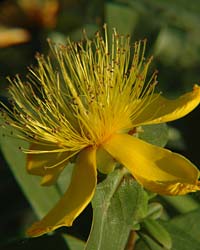 Years ago, in many midwestern neighborhoods it seemed that every yard had one or two of the same flowering shrubs. Regardless of what kind of garden might be hidden in the backyard, the front was sure to contain at least one old-fashioned shrub: lilac, mock orange, spirea, weigela, or honeysuckle. All would bloom by June, and then the flower show would be over. Fortunately, times have changed.
Years ago, in many midwestern neighborhoods it seemed that every yard had one or two of the same flowering shrubs. Regardless of what kind of garden might be hidden in the backyard, the front was sure to contain at least one old-fashioned shrub: lilac, mock orange, spirea, weigela, or honeysuckle. All would bloom by June, and then the flower show would be over. Fortunately, times have changed.
Now flowering shrubs are an integral part of four-season gardens. They provide structure in winter, lush greenery in the growing season (with perhaps an added bonus of fall color) and flowers in — not just June anymore. In Midwest gardens, flowering shrubs help balance the foundation evergreens as well as provide flower, fruit, or foliage displays throughout summer. Consider the attributes of these worthy shrubs of summer when planning your year-round garden:
- Aesculus parviflora (bottlebrush buckeye) is a dense, spreading, 8- to 10-foot shrub that produces pinky white, brushlike flowers on 1- to 2-foot upright stems in July and August. Tolerant of partial shade, it prefers even moisture with plenty of room to naturalize into a thick screening.
- Buddleja davidii (butterfly bush) is known as a dieback shrub in the Chicago area. Its branches die to the ground during severe winters, but its crown remains alive, ready to send up 3- to 6-foot new stems in late spring. From July to frost, different cultivars produce pink, red, purple, white and even yellow, conical blossoms that butterflies find irresistible. The Garden especially recommends 'Black Knight', 'Nanho Blue', 'Nanho Purple', 'Pink Delight' and 'White Profusion'.
- Caryopteris x clandonensis (bluebeard) can also be a dieback shrub in Chicago gardens, depending on the severity of the winter. Smaller than the butterfly bush, it produces soft blue brushlike flowers from late summer to October. The frosty green foliage, light blue flowers, and attractive mounding habit work well in most perennial borders. Garden favorites include 'Arthur Simmonds', 'Blue Mist', and 'Longwood Blue'.
- Clethra alnifolia (summersweet) is a unique flowering shrub that blooms even in shade and prefers moist soil. It blooms in mid- to late summer with highly fragrant white or pink flowers. Its suckering habit makes it a good candidate for naturalistic sites.
- Heptacodium miconioides (seven-son-flower) is the tallest of the group. It might grow to 20 feet in a sheltered, sunny spot, but its loose habit can fit into a range of design schemes. Soft white fragrant flowers bloom in August. The flower effect is enhanced by purplish sepals that come to light as the flowers fade. In winter the exfoliating bark provides even more interest.
- Hydrangea quercifolia (oakleaf hydrangea) is the largest-leaved of the many hardy midwestern hydrangeas, and is a good choice for massing in naturalistic gardens. A 5- to 6-foot spreading shrub, it features large, oaklike leaves that turn reddish purple in fall, huge conical flowers that bloom white but slowly turn pink over summer, and exfoliating rusty bark.
- Hypericum kalmianum (Kalm St. Johnswort) is a very hardy native shrub for many uses. It remains small at 2 to 3 feet, and can give the appearance of a mounding ground cover. The blue-green foliage forms an attractive backdrop to bright yellow flowers that cover the plant in midsummer. Drought tolerant and adaptable to different soils, it can be grown in sun or part shade.
- Physocarpus opulifolius 'Diablo' (Eastern ninebark) possesses many characteristics desired in a multidimensional plant. It has purple foliage, a modest 5- to 6-foot size that lends itself to borders or specimen planting, pale pink button flowers followed by red-purple fruit, and layers of peeling red to light brown bark. Tolerant of partial shade or sun, it responds well to hard pruning in early spring to keep it more compact.
Consider all these worthy shrubs of summer when planning your next garden project.


